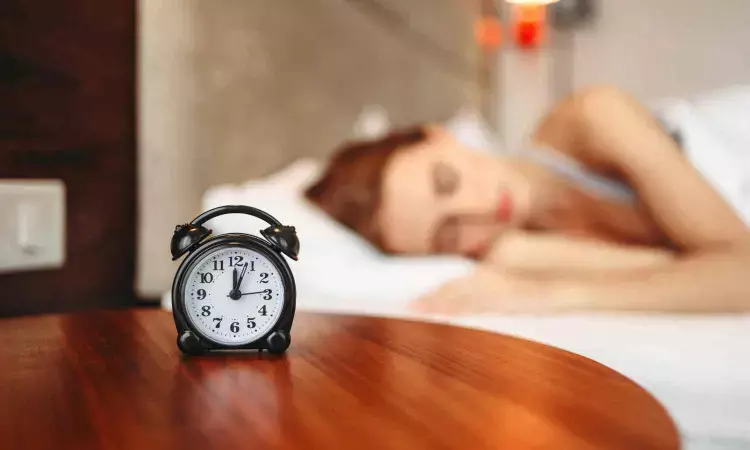- Home
- Medical news & Guidelines
- Anesthesiology
- Cardiology and CTVS
- Critical Care
- Dentistry
- Dermatology
- Diabetes and Endocrinology
- ENT
- Gastroenterology
- Medicine
- Nephrology
- Neurology
- Obstretics-Gynaecology
- Oncology
- Ophthalmology
- Orthopaedics
- Pediatrics-Neonatology
- Psychiatry
- Pulmonology
- Radiology
- Surgery
- Urology
- Laboratory Medicine
- Diet
- Nursing
- Paramedical
- Physiotherapy
- Health news
- Fact Check
- Bone Health Fact Check
- Brain Health Fact Check
- Cancer Related Fact Check
- Child Care Fact Check
- Dental and oral health fact check
- Diabetes and metabolic health fact check
- Diet and Nutrition Fact Check
- Eye and ENT Care Fact Check
- Fitness fact check
- Gut health fact check
- Heart health fact check
- Kidney health fact check
- Medical education fact check
- Men's health fact check
- Respiratory fact check
- Skin and hair care fact check
- Vaccine and Immunization fact check
- Women's health fact check
- AYUSH
- State News
- Andaman and Nicobar Islands
- Andhra Pradesh
- Arunachal Pradesh
- Assam
- Bihar
- Chandigarh
- Chattisgarh
- Dadra and Nagar Haveli
- Daman and Diu
- Delhi
- Goa
- Gujarat
- Haryana
- Himachal Pradesh
- Jammu & Kashmir
- Jharkhand
- Karnataka
- Kerala
- Ladakh
- Lakshadweep
- Madhya Pradesh
- Maharashtra
- Manipur
- Meghalaya
- Mizoram
- Nagaland
- Odisha
- Puducherry
- Punjab
- Rajasthan
- Sikkim
- Tamil Nadu
- Telangana
- Tripura
- Uttar Pradesh
- Uttrakhand
- West Bengal
- Medical Education
- Industry
Consistent exercise 2-3 times a week over long term may lower current insomnia risk: BMJ

Consistently exercising 2-3 times a week over the long term is linked to a lower current risk of insomnia as well as the ability to clock up the recommended 6-9 hours of shut eye every night, suggests an international 10-year study published in the open access journal BMJ Open.
Regular exercise is associated with better overall health, and several studies have suggested that physical activity promotes better quality sleep and may improve symptoms of chronic insomnia, note the researchers.
But it’s not entirely clear how much gender, age, weight (BMI), overall fitness, general health and exercise type contribute to this association, they add.
To explore this further, the researchers assessed the frequency, duration, and intensity of weekly physical activity and symptoms of insomnia, nightly sleep clocked up, and daytime sleepiness among middle-aged adults from 21 centres in nine European countries.
The 4399 study participants (2085 men; 2254 women) were drawn from the European Community Respiratory Health Survey.
They had answered questions on the frequency and duration of physical activity at baseline (ECRHS II;1998-2002) and on physical activity, insomnia symptoms (Basic Nordic Sleep Questionnaire; scale 1-5), sleep duration and daytime sleepiness (Epworth Sleepiness Scale) 10 years later (ECRHS III; 2011-14).
Participants who reported that they exercised at least two or more times a week, for 1 hour/week or more, were classified as being physically active.
Over the 10 year period, 37% (1601) of participants were persistently inactive; 18% (775) became physically active; 20% (881) became inactive; and 25% (1082) were persistently active.
Participants in Norway were most likely to be persistently active, while participants in Spain, followed by Estonia, were most likely to be persistently inactive.
Persistently active participants were more likely to be men, younger, and to weigh slightly less. They were also less likely to be current smokers and more likely to be currently working.
After adjusting for age, sex, weight (BMI), smoking history, and study centre, those who were persistently active were significantly (42%) less likely to find it difficult to fall asleep, 22% less likely to have any symptom of insomnia, and 40% less likely to report 2 or 3 (37% less likely) insomnia symptoms.
Insomnia symptoms were also independently associated with age, female gender, and weight.
As for total nightly hours of sleep and daytime sleepiness, after adjusting for age, sex, weight, smoking history, and study centre, persistently active participants were most likely to be normal sleepers while the persistently inactive were least likely to be in that category.
The persistently active were significantly (55%) more likely to be normal sleepers and significantly less likely (29%) to be short (6 hours or less), and 52% less likely to be long, sleepers (9 hours or more). And those who became active were 21% more likely to be normal sleepers than those who were persistently inactive.
The researchers acknowledge that they weren’t able to objectively assess changes in physical activity levels between the two time points and that all the elements relied on subjective assessment via questionnaire.
But they nevertheless conclude: “Our results are in line with previous studies that have shown the beneficial effect of [physical activity] on symptoms of insomnia, but the current study additionally shows the importance of consistency in exercising over time, because the association was lost for initially active subjects who became inactive.”
Reference:
Bjornsdottir E, Thorarinsdottir EH, Lindberg E, et alAssociation between physical activity over a 10-year period and current insomnia symptoms, sleep duration and daytime sleepiness: a European population-based studyBMJ Open 2024;14:e067197. doi: 10.1136/bmjopen-2022-067197.
Dr Kamal Kant Kohli-MBBS, DTCD- a chest specialist with more than 30 years of practice and a flair for writing clinical articles, Dr Kamal Kant Kohli joined Medical Dialogues as a Chief Editor of Medical News. Besides writing articles, as an editor, he proofreads and verifies all the medical content published on Medical Dialogues including those coming from journals, studies,medical conferences,guidelines etc. Email: drkohli@medicaldialogues.in. Contact no. 011-43720751


